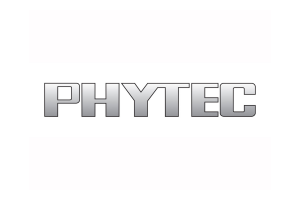Faster, more accurate, more economical
Fully automated soldering robot
A cobot cell and a mobile workstation combine to become a soldering robot for selective soldering of THT (through hole technology) components. It can be used either as a closed or open collaborative workstation and is a good alternative to hand soldering.
The new soldering robot is targeted at the production of power electronics. When large electrical currents flow, developers and manufacturers usually rely on through-hole components. And some of these are still soldered by hand.
This work can also be done by a soldering robot. Above all, the high reproducibility “represents an alternative to manual soldering”, explains Hans Schnurr, robotics and soldering specialist at the distributor Weidinger. In partnership with ADT Fuchs from Nuremberg, the company has developed a selective soldering robot that is modular in design.
The cobot cell includes a robot arm with a soldering head that performs the actual soldering in the adjacent work cell. “With the soldering robot, we can both solder individual solder joints and work in a drag soldering process. Due to the accurate and reliable wire feed, we are thus able to create precise solder joints.”
Modular design

With selective soldering robots, the effort required with component changes plays a major role. So, to keep this effort as low as possible the modular design was chosen. Robot cells and work cells can be quickly separated and exchanged, and the robot periphery can be expanded with minimal effort.
According to Weidinger, this also enables rapid commissioning with reduced effort in assembly and project planning. The soldering robot is designed for use in ESD-critical environments and requires less space than a manual workstation. The demo cell on display is based on a stable and lightweight base frame made of aluminum profiles and four polycarbonate windows on all sides for an enclosed and easily visible working environment.
Plug&Play programming via TMflow
When putting the system together, special attention was paid to ensure that the soldering robot could be operated without training and a long familiarization period. For this purpose, the programming environment TMFlow that works with a graphical user interface was integrated. The actions are programmed directly on the cobot or via a network connection on the PC, similar to sequence control via drag and drop.
Converting to a production cell
The robot cells are portable and work with open standards to simplify their initial integration into new production and assembly lines and also to facilitate subsequent integration into existing systems. The soldering robot can also be converted to a manufacturing cell to perform tasks such as screwing, assembly, pick & place.
Automation for SMEs
“Our experience is that the most successful companies are those that combine the strengths of their employees with the potential of new technologies and thus focus on promising human-robot collaboration,” says Hans Schnurr. He considers collaborative robots to be suitable for this for several reasons: “Cobots are flexible, skilled and easy to operate, and they can take on simple, banal tasks as well as challenging ones that pose a danger to humans. This in turn frees up important capacity allowing employers to deploy skilled workers elsewhere.” Due to the low programming effort required, collaborative robots are also a suitable means of automating processes in small and medium-sized enterprises.
“The latest cobots can be operated intuitively, so customers do not have to rely on trained in-house programmers with specialist knowledge. This gives medium and small businesses with lower levels of automation the opportunity to benefit comprehensively from automation. Digitally networked, robots will form the core of industrial production in the future,” Schnurr is certain.
Weidinger at productronica 2021: Hall A4, Booth 345







